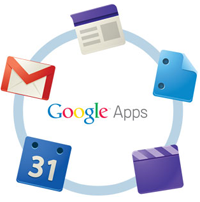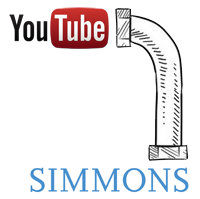 Over the last month, we’ve been busy helping staff members in the Library, Student Life, and elsewhere migrate their email to Google Apps. As we move into February, we’ll be finishing migrations for most of the administrative staff and focusing our efforts on staff and faculty in each college. To find out when you will be migrated, please check the timeline on the Google Apps project site. As we get closer to your migration date, our team will reach out to you get some additional information and set a date to move your email to Google Apps.
Over the last month, we’ve been busy helping staff members in the Library, Student Life, and elsewhere migrate their email to Google Apps. As we move into February, we’ll be finishing migrations for most of the administrative staff and focusing our efforts on staff and faculty in each college. To find out when you will be migrated, please check the timeline on the Google Apps project site. As we get closer to your migration date, our team will reach out to you get some additional information and set a date to move your email to Google Apps.
In the meantime, you can do a few things to prepare for the move. We know that, for most people, this is a big change, and we want to make it as painless as possible. To help, we’ve gathered resources on our project site, including answers to frequently asked questions, and introductions to Gmail, Google Calendar, Google Drive, and more. We’re also holding weekly drop-in trainings where you can watch a short presentation on Google Apps, ask questions, and get help with your account if you need it. Starting in February, we’ll have four sessions every week. Take a look at the schedule and find a time that works for you.
We also want to take this opportunity to reiterate a couple of important notes about the migration. First, your email address will not change. You can still use your @simmons.edu address as you always have. In addition, all of your email will come along with you to your Google Apps account. We’re migrating all of the email on your Simmons computer or on the Simmons server to your new account. When you log in for the fist time at gmail.simmons.edu, you’ll see all of the email that was in your inbox previously. Finally, events scheduled in Meeting Maker will not be migrated to your new account. There is no foolproof way to do this without potentially compromising your previously created meetings and events. To learn more about moving your events from Meeting Maker to Google Calendar, please see the step-by-step instructions available here.
We hope that the hands-on approach we’re taking to this project will make the transition smooth for you. It will take some time to learn new email and calendar systems, but the long-term benefits of moving to Google Apps are many. If you have specific questions about the migration process, please reach out to Roy Balcom ([email protected]). If you have questions about using Google Apps once you’ve been migrated, take a look at the FAQs on the project site or contact the Service Desk at 617-521-2222.
